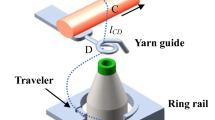Abstract
In the present study we investigated the effect of changes in the content of microcrystalline cellulose (MCC) on a direct pelletization process in a rotary processor in which the liquid addition was terminated once a certain increase in torque was produced. Nine different mixtures of MCC and lactose with MCC contents varying from 10% to 100% (w/w) were pelletized using 6 different torque increase levels, and the changes in pellet characteristics were investigated. The pellet characteristics investigated were pellet shape, size, and size distribution as well as the water content of the pellets at the end of liquid addition. To produce spherical agglomerates with suitable characteristics in a reproducible way, a content of a least 20% (w/w) MCC was found necessary. Linear correlations were found between the MCC content and the water content and between the torque incraase and the water content, showing that the torque increase is suitable to control the process. A higher torque increase or a higher MCC content was found to increase the water content independently of each other.
Similar content being viewed by others
References
Vecchio C, Bruni G, Gazzaniga A. Preparation of indobufen pellets by using centrifugal rotary fluidized bed equipment without starting seeds. Drug Dev Ind Pharm. 1994;20:1943–1956.
Fielden KE, Newton JM. Extrusion and extruders. In: Swarbrick J, Boylan JC, eds. Encyclopedia of Pharmaceutical Technology. Vol. 5. New York: Marcel Dekker; 1992;395–442.
Vertommen J, Kinget R. Influence of five selected processing and formulation variables on the particle size, particle size distribution, and friability of pellets produced in a rotary processor. Drug Dev Ind Pharm. 1997;23:39–46.
Holm P, Bonde M, Wigmore T. Pelletization by granulation in a roto-processor RP-2. Part 1. Effects of process and product variables on granule growth. Pharm Technol Eur. 1996;8:22–36.
Kristensen J, Schaefer T, Kleinebudde P. Direct pelletization in a rotary processor controlled by torque measurements. I: Influence of process variables. Pharm Dev Technol. 2000;5:247–256.
Robinson RL, Hollenbeck RG. Manufacture of spherical acetaminophen pellets: comparison of rotary processing with multiple-step extrusion and spheronization. Pharm Technol. 1991;15:48–56.
Sienkiewicz G, Pereira R, Rudnic EM, Lausier JM, Rhodes CT. Spheronization of theophylline-avicel combinations using a fluidized-bed rotogranulation technique. Drug Dev Ind Pharm. 1997;23:173–182.
Holm P. Pelletization by granulation in a roto-processor RP-2. Part 2. Effects of process and product variables on agglomerates shape and porosity. Pharm Technol Eur. 1996;8:38–45.
Vertommen J, Rombaut P, Kinget R. Shape and surface smoothness of pellets made in a rotary processor. Int J Pharm. 1997;146:21–29.
Heng PW, Wan LS, Tan YT. Optimization of spheroid production by centrifugal rotary processing. Int J Pharm. 1996;143:107–112.
Vertommen J, Jaucot B, Rombaut P, Kinget R. Improvement of the material motion in a rotary processor. Pharm Dev Technol. 1996;1:365–371.
Wan LS, Heng PW, Liew CV. The role of moisture and air gap pressure in the formation of spherical granules by rotary processing. Drug Dev Ind Pharm. 1994;20:2551–2561.
Holm P. Pelletization by granulation in a roto-processor RP-2. Part 3. Methods of proces control and the effect of microcrystalline cellulose on wet granulation. Pharm Technol Eur. 1996;8:36–46.
Vertommen J, Rombaut P, Michoel A, Kinget R. Estination of the amount of water removed by gap and atomization air streams during pelletization in a rotary processor. Pharm Dev Technol. 1998;3:53–72.
Schaefer T, Mathiesen C. Melt pelletization in a high shear mixer. VIII. Effects of binder viscosity. Int J Pharm. 1996;139:125–138.
Wan LS, Heng PW, Liew CV. Spheronization conditions on spheroid shape and size. Int J Pharm. 1993;96:59–65.
Bains D, Boutell SL, Newton JM. The influence of moisture content on the preparation of spherical granules of barium sulphate and microcrystalline cellulose. Int J Pharm. 1991;69:233–237.
Gazzaniga A, Sangalli ME, Bruni G, Zema L, Vecchio C, Giordano F. The use of β-cyclodextrin as a pelletization agent in extrusion/spheronization process. Drug Dev Ind Pharm. 1998;24:869–873.
Kleinebudde P, Solvberg AJ, Lindner H. The powerconsumption-controlled extruder: a tool for pellet production. J Pharm Pharmacol. 1994;46:542–546.
Kleinebudde P, Schroder M, Schultz P, Muller BW, Waaler T, Nymo L. Importance of the fraction of microcrystalline cellulose and spheronization speed on the properties of extruded pellets made from binary mixtures. Pharm Dev Technol. 1999;4:397–404.
Thoma K, Ziegler I. Investigation of the influence of the type of extruder for pelletization by extrusionspheronization. II. Sphere characteristics. Drug Dev Ind Pharm. 1998;24:413–422.
Schmidt C, Kleinebudde P. Significance of the granulation step in pelletization by extrusion/spheronization. Chem Pharm Bull. 1999;47:405–412.
Kleinebudde P. Shrinking and swelling properties of pellets containing microcrystalline cellulose (MCC) and low substituted hydroxypropylcellulose (L-HPC). Part I. Shrinking properties. Int J Pharm. 1994;109:209–219.
Author information
Authors and Affiliations
Corresponding author
Additional information
Published August 16, 2000
Rights and permissions
About this article
Cite this article
Kristensen, J., Schæfer, T. & Kleinebudde, P. Direct pelletization in a rotary processor controlled by torque measurements. II: Effects of changes in the content of microcrystalline cellulose. AAPS PharmSci 2, 24 (2000). https://doi.org/10.1208/ps020324
Received:
Accepted:
Published:
DOI: https://doi.org/10.1208/ps020324




